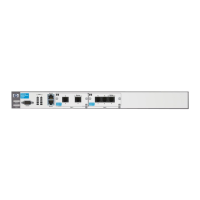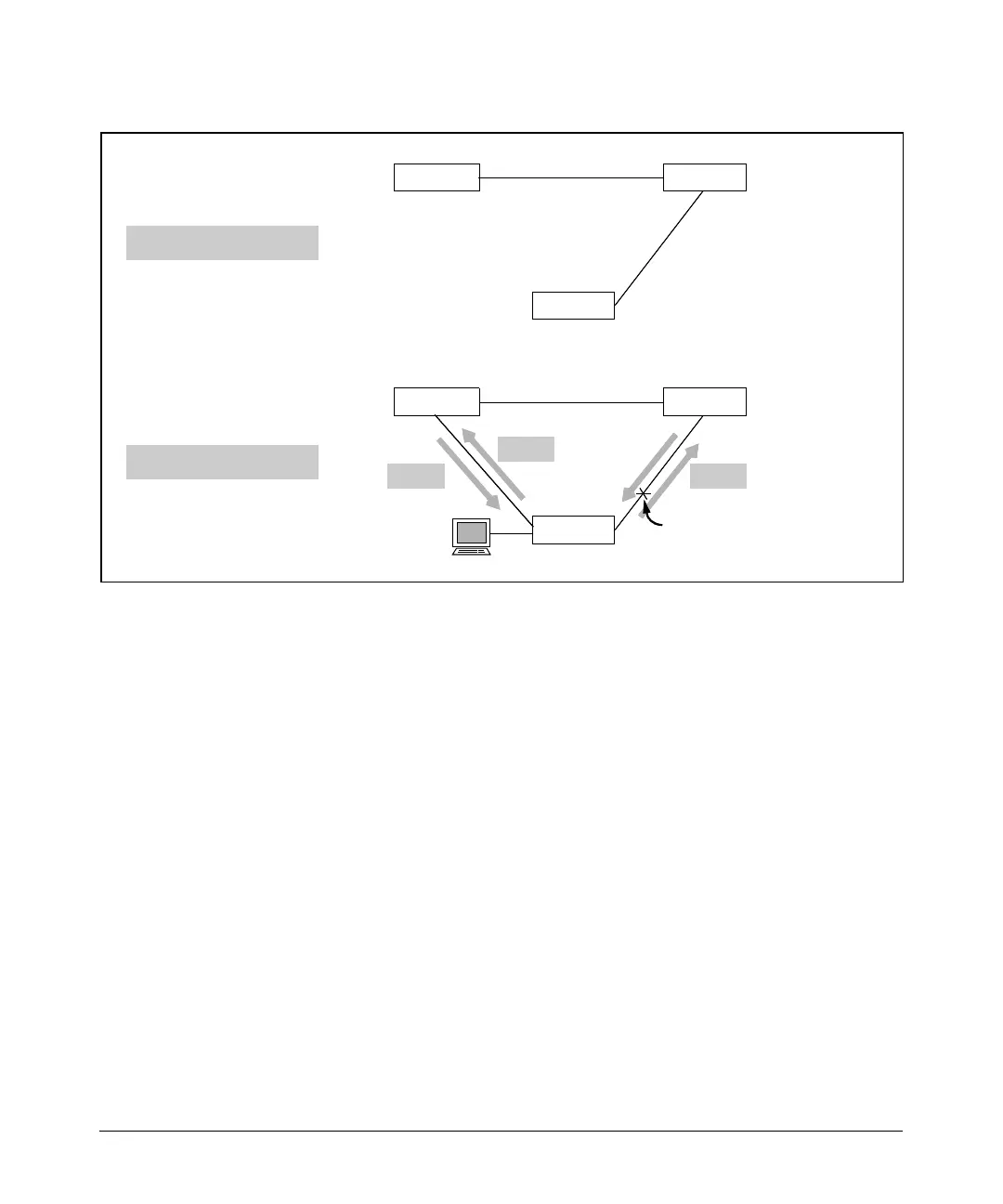10-16
Bridging—Transmitting Non-IP Traffic or Merging Two Networks
Configuring Spanning Tree
Figure 10-5. Asserting Sync
When network topology changes, devices assert sync to propagate new paths
in an ordered flow from devices closer to the root to devices further from the
root. A device sends a BDPU to a neighbor on a potential designated port. The
BPDU has a proposal flag set, which requests that the two ports immediately
transition to the forwarding state. If the neighbor determines that this BPDU
is best (the transmitting port is closest to the root), it replies with an agreement
BPDU. The neighbor also asserts sync: it makes the port on which it received
the BPDU its root port and shuts down all other ports except edge ports.
The neighbor then sends its own proposal BPDUs through the blocked ports.
If a neighboring device determines that the connection is best, it brings up its
port as root port and continues the process. Otherwise, it sends a non-
acknowledgement, and ports on both sides of the link enter the blocking state.
In this way, topology changes propagate rapidly from the root through to
edge nodes.
Blocking
Reject
Designated Root
Designated
Root
Root
Designated
RootDesignated
Bridge ARoot bridge
Bridge B
Bridge ARoot bridge
Bridge B
Sync
Sync
Sync
2. A new link is added.
1. The network is stable.
Root
Blocking
Reject
Designated Root
Designated
Root
Root
Designated
RootDesignated
Bridge ARoot bridge
Bridge B
Bridge ARoot bridge
Bridge B
Sync
Sync
Sync
2. A new link is added.
1. The network is stable.
Root

